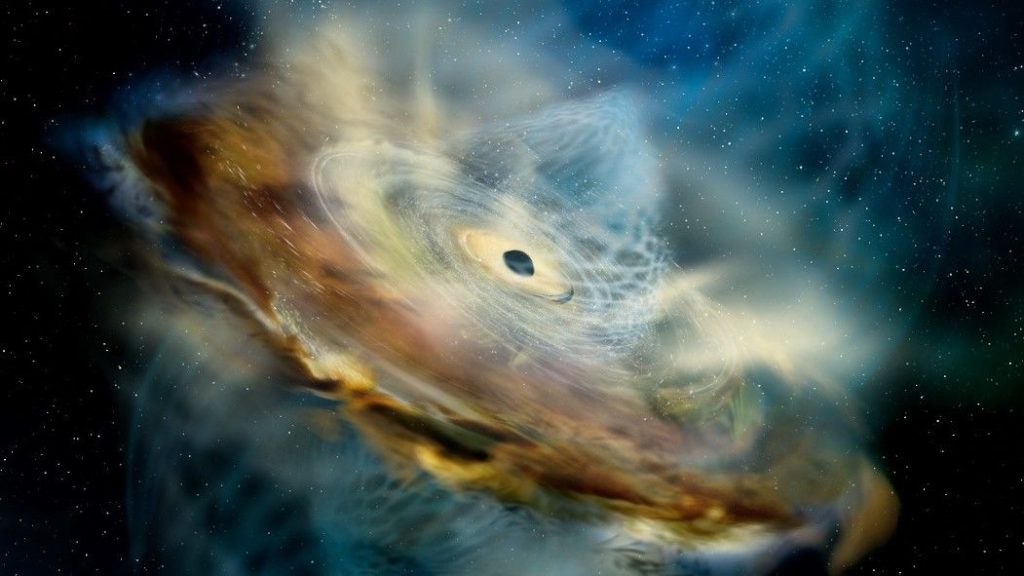The black hole may have reversed its magnetic field before our eyes.
The story begins with a galaxy known as 1ES 1927 + 654, which briefly stopped X-ray emissions for a few months, then resumed and increased. So far, the potential Black hole The observations represent a unique case that can be seen from 236 million light-years away.
“This event marks the first time we’ve seen X-rays fall out completely while other wavelengths shine out,” lead study author Sebasish Laha, a research scientist at the University of Maryland, Baltimore County and NASA’s Goddard Space Flight Center in Maryland, said at the agency. NASA statment .
If scientists can confirm that the explosion was caused by a giant black hole At the galaxy’s core altering its magnetic field, the event may help astrophysicists understand how this switch affects the black hole’s environment, according to the statement.
Related : Eureka! Scientists have photographed a black hole for the first time
Artist’s depiction of a supermassive black hole prior to ignition. (Image credit: NASA/Sonoma State University, Aurore Simonnet)
The Milky Way (and most other large galaxies like it) have a supermassive black hole at their core; A black hole pulls matter inward toward its center. Matter first collects in an accretion disk surrounding the black hole, then heats up and emits light (in visible, ultraviolet, and X-ray wavelengths) as the material is pushed inward.
As this material is pushed inward, it forms a cloud of extremely hot particles that scientists call the corona. The new study suggests that it was changes in the corona that caused X-rays streaming from the core of galaxy 1ES 1927+654 to temporarily disappear.
Artist’s illustration of the accretion disk around a supermassive black hole, embedded in a galaxy. (Image credit: DESY Science Communication Lab)
If a magnetic reversal occurs, causing the north pole to become the south pole and vice versa, the visible and ultraviolet light should increase toward the center of the galaxy due to the increase in heat, as the corona begins to shrink and the accretion disk grows more tightly in the center.
But as the inversion develops, the field weakens so much that the corona cannot be supported at all, causing the X-ray emissions to stop, the researchers suggested.
This idea matches observations of this galaxy, where X-ray emissions reappeared in October 2018, roughly four months after they disappeared, indicating a magnetic reversal. The galaxy reverted to X-ray emissions prior to the volcanic eruption in the summer of 2021.
Two space telescopes have tracked changes in ultraviolet and X-rays, including NASA’s Neil Geirels Swift Observatory and the European Space Agency XMM-Newton Satellites. Visual and radio observations have been made from several ground-based telescopes in locations such as Italy, the Canary Islands, and New Mexico.
a paper Based on the research, it has been accepted for publication in The Astrophysical Journal and is available on preprint service arXiv.org.
Follow Elizabeth Howell on Twitter Tweet embed . Follow us on Twitter Tweet embed or Facebook.







More Stories
In Greece Porsche 911 50th Anniversary – How much does it cost?
PS Plus: With a free Harry Potter game, the new season begins on the service
Sony set to unveil PS5 Pro before holiday season – Playstation